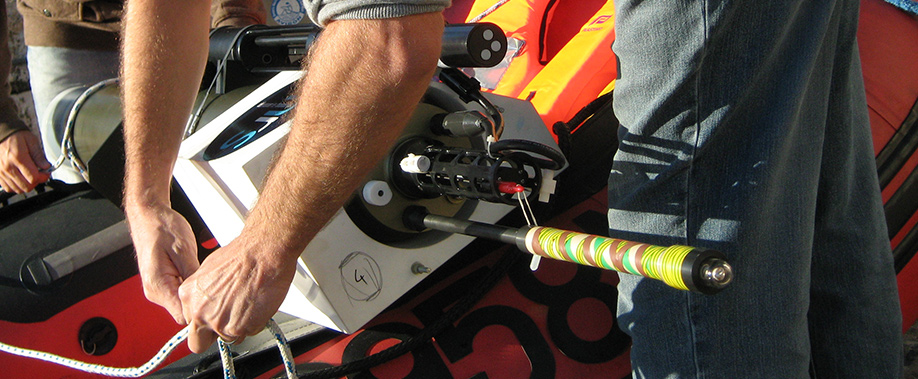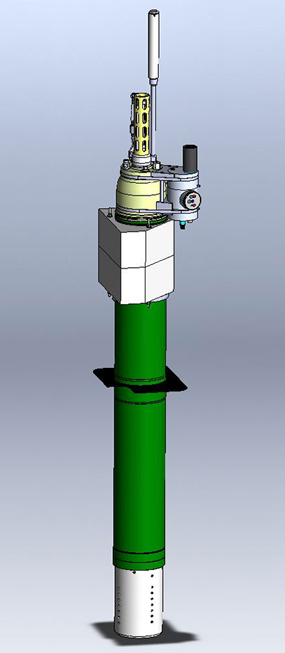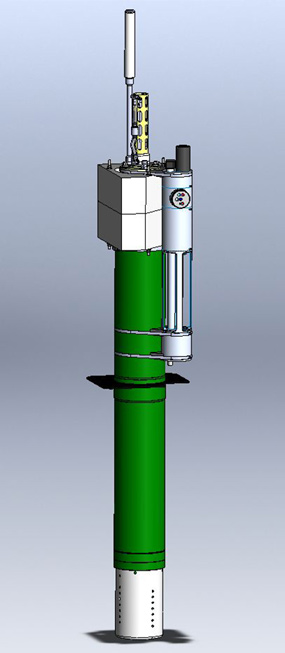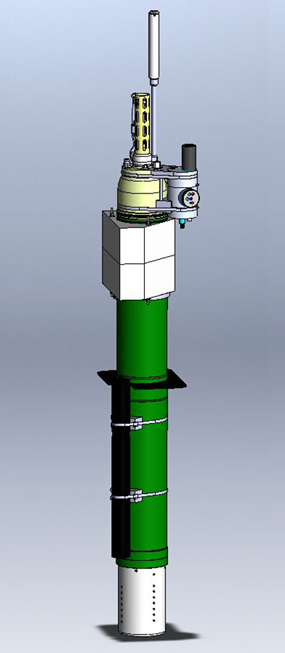Biogeochemical float

The first generation profiling float has been initially designed as part of the PABO ANR project. It was based on a standard CTS3 PROVOR float to which has been added an iridium two-way transmission capability.
This “PROVBIO” profiling float measured at a 1m vertical resolution not only temperature and salinity but also irradiance at three wavelengths (412nm, 490nm, 555nm), fluorescence of Colored Dissolved Organic Matter, fluorescence of Chlorophyll-a, backscattering coefficient (530nm) and attenuation coefficient (660nm).
Eight floats have been developed and deployed in various open ocean areas: They have provided unique time series of physical and biogeochemical fields (see also Xing et al. 2011, 2012, 2014).
The subsequent availability of miniature low-power nitrate sensors made also feasible the autonomous and remote measurement of this key variable. As for the "nitrate glider", we have thus developed a “nitrate float”, the so-called PROVNUT, which was a combination of a standard CTS3 PROVOR float with iridium capability and a SUNA sensor. First deployments of this “PROVNUT” prototype, undertaken in mid-2011 in the Ligurian Sea, have provided very promising results.
These preliminary studies thus opened the possibility to design a more complete float with respect to the variety of bio-optical and biogeochemical measurements by combing the payloads of the PROVBIO and the PROVNUT float. This was the basis for new float configurations as designed for the remOcean and NAOS projects.
These floats thus correspond to a second generation of biogeochemical profiling floats. First they will integrate a new electronic which is splitted in one part that manages the float displacement and another part that manages science data acquisition and first treatment.
Additionally, these floats measure more variables than the previous generation. Comparatively to the first PROVBIO generation they will indeed allow nitrate as well oxygen to be simultaneously measured. Irradiance now comprise measurement at 380, 412 and 490nm as well as PAR, the photosynthetically available radiation (integrated over 400-700nm).
3D representations of three different types of remOcean floats
 A) Together with CTD measurements it includes the measurements of Ed(380), Ed(412), Ed(490), PAR, CDOM fluorescence, Chlorophyll-a fluorescence, bb(700) and O2
A) Together with CTD measurements it includes the measurements of Ed(380), Ed(412), Ed(490), PAR, CDOM fluorescence, Chlorophyll-a fluorescence, bb(700) and O2 B) same as A) with the additional measurement of c(660)
B) same as A) with the additional measurement of c(660) A-SUNA) same as A) with the additional measurement of NO3
A-SUNA) same as A) with the additional measurement of NO3
Such configurations are also used in the context of the NAOS project
Note that the oxygen optode sensor is not represented here. (credit LOV-NKE-Satlantic)